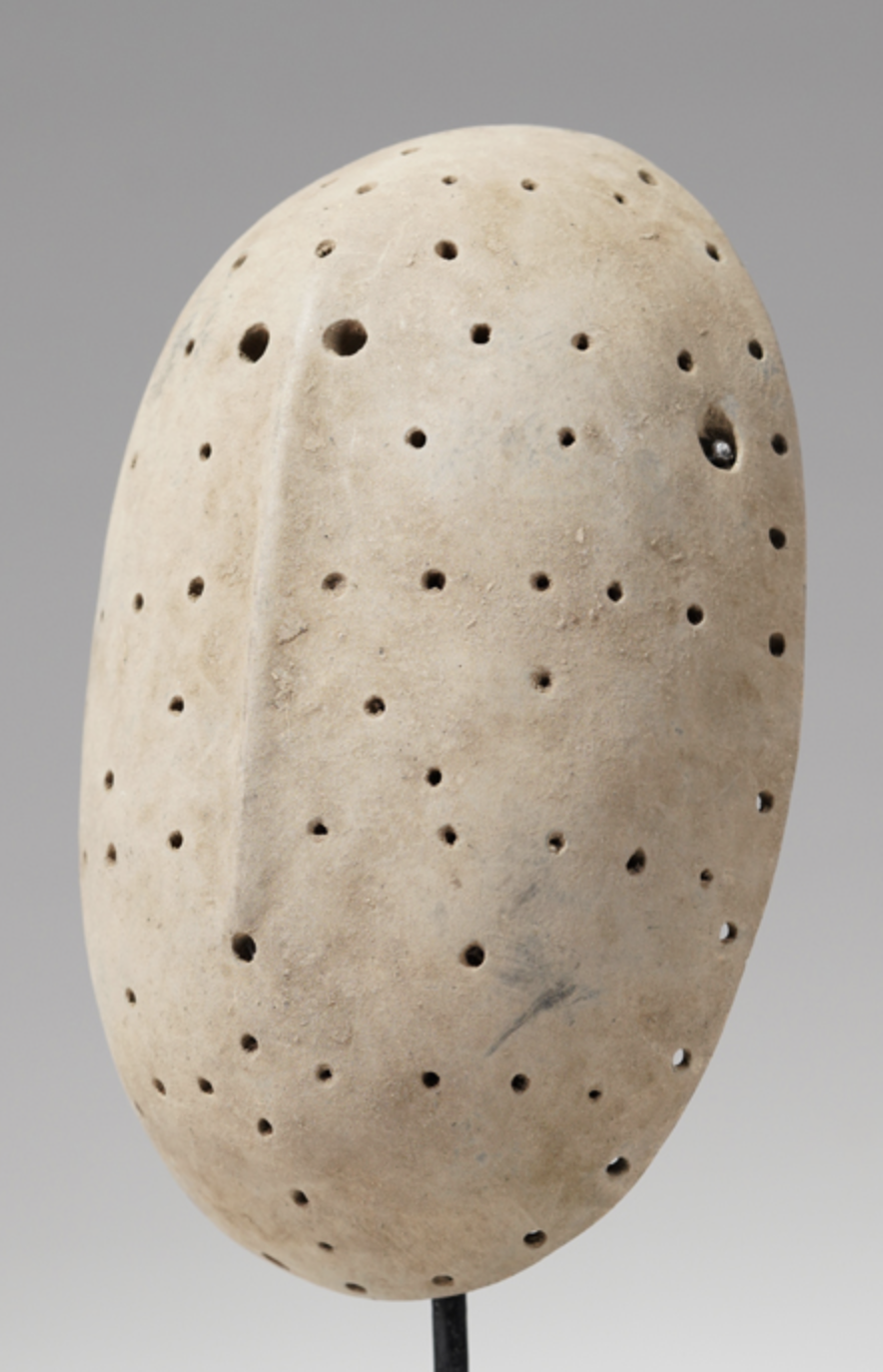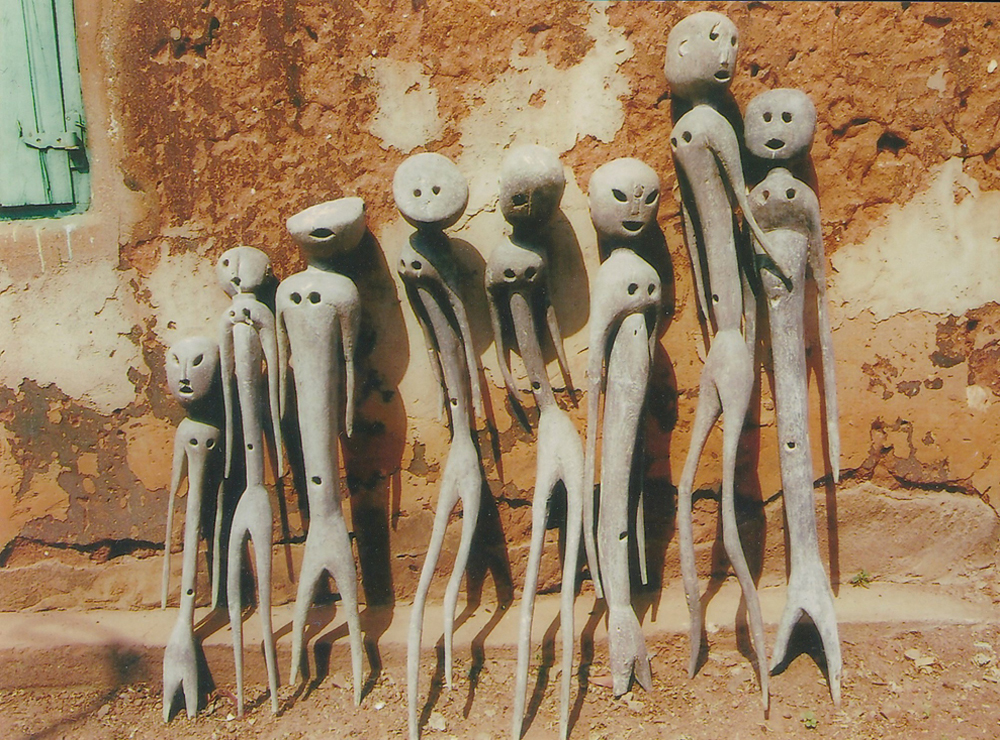wolfgang-jaenicke
A Prampram mask
A Prampram mask
Couldn't load pickup availability
A Prampram mask, Ghana. Certificate of origin and provenance.
"A great discovery were the so called "Prampram" sculptures, which are stylistically related to the Northern part of the small tribes in Northern Ghana and Togo, in particular the Moba. In my interview Baba Sylla, Accra, Ghana, isn't speaking about a "tribe“, he named it "a great family", which seems to be incorrect under anthropological aspects, but it is a link to the fact, how small this "tribe" is or was in reality. May be this is the reason that these sculptures are unknown in literature. Only Karl-Heinz Krieg (short before his death) conducted unpublished researches with voice protocols close to the hut, where these sculptures were once part of a shrine. But a friend of him told me that Mr. Krieg had no possibility to access the hut."
Lit.: Dogbe, B.K. (1977). “The human form as a central theme in art” in Image (Journal of the College of Art), Interview with Baba Sylla, the well known Antique dealer in Accra, Ghana, who collected these sculptures the first time.
The Prampram people, located primarily in the Greater Accra Region of Ghana, are a subgroup of the larger Ga-Dangme ethnic cluster. Their cultural heritage is deeply rooted in the coastal environment, which has influenced their social structure, livelihoods, and artistic expressions. Among their most significant cultural artifacts are the masks used in traditional ceremonies, which play a central role in ritual and social life. These masks, typically carved from wood and sometimes adorned with paint, fabric, or beads, serve multiple functions including embodying ancestral spirits, facilitating communication with the spiritual realm, and reinforcing communal values.

Endigmatic the different patterns of these Pramoram masks.
The relatively rare Prampram masks are worn during important festivals such as the Homowo, a harvest festival celebrated by Ga-Dangme peoples, and during funerary rites. The designs often incorporate stylized human or animal features, with exaggerated forms that hold symbolic meanings within the community. Unlike some other Ga-Dangme groups, the Prampram masks exhibit distinctive coastal influences, reflecting the tribe’s unique historical and geographical context. These masks are integral to masquerade performances, which combine dance, music, and costume to convey stories, social norms, and spiritual beliefs.Most of these sculptures and masks were collected by Wolfgang Jaenicke with more than 100 objects.
The artistic tradition of Prampram mask-making is passed down through generations, emphasizing both technical skill and cultural knowledge. The masks are not merely aesthetic objects but function as active participants in social and religious life. This intersection of art, spirituality, and community underscores the importance of mask culture among the Prampram as a medium for connecting the living with ancestors and reinforcing social cohesion.
For further academic study on the Prampram and their masks, see: Arhin, Kwame, Traditional Rule in Ghana: Past and Present (Sedco Publishing, 1985); Picton, John, and John Mack, African Art and Leadership (University of California Press, 1989); and Vogel, Susan Mullin, Masks and Masking in West Africa (University of California Press, 1994). Online resources include the Smithsonian National Museum of African Art’s collections (https://africa.si.edu) and the British Museum’s African art database (https://britishmuseum.org/collection/africa). These sources provide valuable context for understanding the symbolic, cultural, and artistic significance of Prampram masks within the broader framework of West African mask traditions.

Fieldphoto, Karl Heinz Krieg, around 2010, in front of the house of Baba Sylla with his.
Height: 22 cm
Weight: 0,8 kg (Incl. stand)
























